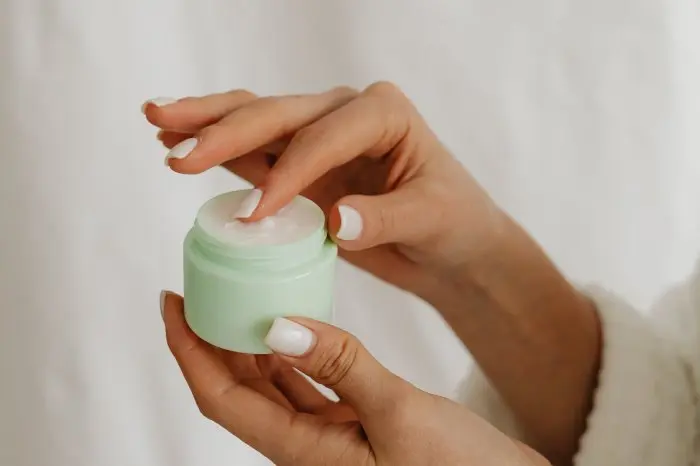In the ever-evolving world of skin care, trends come and go, but one of the latest and most intriguing is the emergence of products that resemble milk. This trend isn’t just about aesthetics; it’s rooted in science and the quest for gentle, effective skincare solutions.
Here’s a look into why the hottest new skincare products are taking on a milky appearance and texture.
Gentle Formulation in Skincare Products
In the realm of skincare, gentle formulations are increasingly sought after, especially as awareness about skin health grows. Understanding what constitutes a gentle formulation and its significance is key to choosing the right skincare products. Here’s a deeper dive into the concept of gentle formulation in skincare:
Key Characteristics of Gentle Formulations
- Mild Ingredients: Gentle formulations typically contain ingredients that are less likely to irritate or cause adverse reactions on the skin. These include natural and hypoallergenic components, avoiding harsh chemicals and allergens.
- pH-Balanced: The skin’s natural pH is slightly acidic, around 4.7 to 5.75. Gentle skincare products are formulated to maintain this pH balance, which is crucial for skin health and protecting its natural barrier.
- Non-Comedogenic: These formulations are usually non-comedogenic, meaning they don’t clog pores, which is particularly important for those with acne-prone or sensitive skin.
- Hydration-Focused: Gentle skincare often emphasizes hydration, utilizing ingredients that naturally moisturize the skin without causing excess oiliness or dryness.
- Free from Irritants: They typically avoid known skin irritants like alcohol, sulfates, synthetic fragrances, and parabens. These can trigger reactions in sensitive skin.
Benefits of Gentle Formulations
- Suitable for Sensitive Skin: They are ideal for those with sensitive skin, as they reduce the risk of irritation and inflammation.
- Prevents Skin Damage: By being less harsh, they preserve the skin’s natural oils and microbiome, preventing long-term damage.
- Better Skin Tolerance: Users are less likely to experience adverse effects, making these products suitable for daily use.
Nourishing Ingredients in Skincare
Nourishing ingredients play a crucial role in skincare, providing essential nutrients to maintain healthy, vibrant, and youthful skin. These ingredients help to repair, hydrate, and protect the skin, offering a range of benefits. Understanding the various types of nourishing ingredients can assist in choosing the right products for specific skin needs.
Key Types of Nourishing Ingredients
Vitamins:
- Vitamin C: A powerful antioxidant, it aids in collagen production, brightens skin, and reduces signs of aging.
- Vitamin E: Known for its moisturizing and healing benefits, it also provides antioxidant protection against environmental damage.
Natural Oils:
- Jojoba Oil: Mimics the skin’s natural oils, making it an effective moisturizer for various skin types.
- Argan Oil: Rich in Vitamin E and fatty acids, it hydrates the skin deeply without clogging pores.
Fatty Acids:
- Omega-3 and Omega-6: Essential fatty acids that strengthen the skin’s lipid barrier, helping to lock in moisture and protect against environmental stressors.
Proteins and Peptides:
- Collagen: Provides skin firmness and elasticity.
- Peptides: Small protein fragments that signal the skin to produce collagen, promoting skin repair and reducing signs of aging.
Hyaluronic Acid:
A naturally occurring substance in the skin, known for its capacity to attract and hold vast amounts of moisture.
Antioxidants:
Combat free radicals from environmental stressors like UV radiation and pollution, which can lead to premature skin aging.
Benefits of Nourishing Ingredients
- Hydration: Helps maintain optimal moisture balance in the skin, preventing dryness and flakiness.
- Repair and Regeneration: Aids in the natural skin repair process, reducing the appearance of scars, fine lines, and wrinkles.
- Protection: Offers a defense against environmental damage and oxidative stress, preserving skin health and appearance.
Aesthetic and Sensory Appeal in Skincare Products

The aesthetic and sensory appeal of skincare products plays a significant role in the overall user experience. Beyond the efficacy of these products, the way they look, feel, and even smell can influence consumer satisfaction and perception. This aspect of skincare is increasingly becoming a focus for brands aiming to provide a holistic and enjoyable skincare experience.
Key Elements of Aesthetic and Sensory Appeal
Texture and Consistency:
- Variety: Products range from rich creams to light serums, offering different tactile experiences.
- Application Experience: The feel of the product on the skin, whether it’s smooth, creamy, or refreshing, contributes significantly to user enjoyment.
Packaging and Presentation:
- Visual Design: Elegant, unique, or minimalist packaging designs can enhance the perceived value and appeal of the product.
- Practicality: User-friendly designs, such as pump dispensers or droppers, add to the ease and pleasure of product usage.
Fragrance:
- Scented Products: A pleasant or signature scent can elevate the sensory experience, making the skincare routine more luxurious and enjoyable.
- Fragrance-Free Options: For sensitive skin or fragrance-sensitive users, fragrance-free options are essential.
Color and Appearance:
- Natural Colors: Ingredients like botanical extracts can add natural colors to products, enhancing visual appeal.
- Colorants: Some products use safe synthetic colorants to achieve a certain look or to align with brand identity.
Importance in Skincare
- Emotional Connection: Aesthetically pleasing products can create an emotional resonance with users, enhancing the overall satisfaction and experience.
- Sensory Experience: Engaging multiple senses can turn a routine task into a luxurious and indulgent ritual, encouraging consistent product use.
- Brand Identity: Unique sensory and aesthetic elements can distinguish a brand in a crowded market, creating brand recognition and loyalty.
Versatility in Skincare
Versatility in skincare refers to the ability of products or ingredients to serve multiple purposes or suit various skin types and conditions. This multifunctionality not only simplifies skincare routines but also offers cost-effectiveness and space-saving benefits. Here’s a closer look at why versatility is an increasingly sought-after trait in skincare products.
Key Aspects of Versatile Skincare
- Multi-use Products: Products like tinted moisturizers or BB creams combine hydration with skin coverage, reducing the need for separate moisturizer and foundation. Cleansing balms or oils that can remove makeup, cleanse the skin, and sometimes even hydrate, serving multiple steps in one product.
- All-in-One Formulations: Products formulated to address multiple skin concerns such as hydration, anti-aging, and brightening in one application. Serums or moisturizers with a blend of active ingredients like hyaluronic acid, antioxidants, and peptides.
- Suitability for Various Skin Types: Products designed to be effective for a range of skin types, from dry to oily, often with balancing or adaptive ingredients. Gentle, hypoallergenic formulations that are suitable even for sensitive skin.
- Adjustable Skincare: Products that can be mixed or layered with others to adjust their strength or effect, catering to different skin needs or environmental changes. Customizable skincare kits allowing users to mix ingredients based on their specific skin concerns.
Benefits of Versatile Skincare
- Simplicity and Convenience: Reduces the number of products needed in a skincare routine, ideal for busy lifestyles or minimalists.
- Cost-Effective: Buying one product that serves multiple purposes can be more budget-friendly than purchasing several single-function products.
- Travel-Friendly: Multifunctional products are ideal for travel, reducing the amount of skincare items to pack.
- Eco-Friendly: Using fewer products means less packaging waste, contributing to a more sustainable lifestyle.
Emphasis on Natural and Organic Ingredients in Skincare
In recent years, there has been a significant shift in the skincare industry towards natural and organic ingredients. This trend stems from a growing consumer awareness of the benefits of these ingredients, as well as a broader emphasis on health, sustainability, and environmental consciousness. Let’s delve into why natural and organic ingredients have become pivotal in skincare.
Understanding Natural and Organic Ingredients
- Natural Ingredients: Derived from nature, such as plants, minerals, and water. Often found in a minimally processed state to retain their natural properties.
- Organic Ingredients: Sourced from plants and other natural materials grown without the use of pesticides, synthetic fertilizers, or genetically modified organisms (GMOs). Certified organic ingredients ensure adherence to strict cultivation and processing standards.
Benefits of Natural and Organic Skincare
- Skin Health: Natural ingredients are often gentler and more compatible with the skin, reducing the risk of irritation and allergies.
- Potent Efficacy: Many natural ingredients are rich in antioxidants, vitamins, and essential nutrients, providing effective skincare benefits.
- Environmental Sustainability: Organic farming practices promote biodiversity and soil health, and reduce pollution and water waste.
- No Harmful Chemicals: Free from potentially harmful synthetic chemicals, parabens, and artificial fragrances, making them a safer choice for skin and overall health.
Conclusion
The trend towards milk-like skincare products is more than just a fad. It’s a reflection of the growing demand for gentle, nourishing, and natural skincare options. These products offer a unique combination of aesthetic appeal, sensory pleasure, and effective skincare, catering to a wide range of skin types and concerns. As the skincare industry continues to innovate, we can expect to see more of these milky products gracing the shelves, offering a soothing and nourishing experience to skincare enthusiasts.



